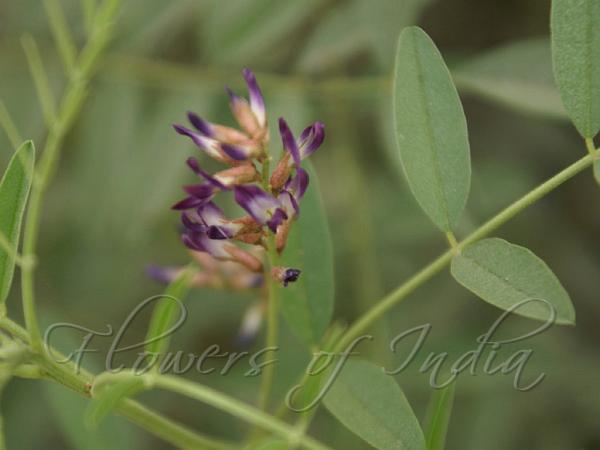|
| Licorice |
|

|

| File size | 99755 |
| Original date | 4/2/10 10:18 PM |
| Resolution | 776 x 582 |
| Flash | Flash did not fire, auto |
| Focal length | 70.0mm |
| Exposure time | 1/125s |
| Aperture | 6.3 |
| Focus Distance | |
| Metering Mode | Multi-segment |
| Camera make | SONY |
| Camera model | DSLR-A100 |
| Sensor type |
|
|
|
|
Photo: |
Botanical name: Glycyrrhiza glabra Family: Fabaceae (Pea family)
The licorice plant is a perennial herb, growing up to 1 m in tall, with
pinnate leaves about 7-15 cm long, with 9-17 leaflets. The flowers are
0.8–1.2 cm long, purple to pale whitish blue, produced in a loose
inflorescence. The fruit is an oblong pod, 2-3 cm long, containing several
seeds. The flavor of liquorice comes mainly from a sweet-tasting compound
called anethole, an aromatic, unsaturated ether compound also found in
anise, fennel, and other herbs. Additional sweetness in liquorice comes
from glycyrrhizic acid, an anti-viral compound sweeter than sugar.
Liquorice flavouring is also used in soft drinks, and in some herbal teas
where it provides a sweet aftertaste. The flavour is common in medicines
to disguise unpleasant flavours.
Medicinal uses: Liquorice may be useful in conventional and
naturopathic medicine for both mouth ulcers and peptic ulcers. In
traditional Chinese medicine, liquorice is commonly used in herbal
formulae to "harmonize" the other ingredients in the formula and to carry
the formula to the twelve "regular meridians" and to relieve a spasmodic
cough.
Liquorice may be useful in conventional and
naturopathic medicine for both mouth ulcers and peptic ulcers. In
traditional Chinese medicine, liquorice is commonly used in herbal
formulae to "harmonize" the other ingredients in the formula and to carry
the formula to the twelve "regular meridians" and to relieve a spasmodic
cough.
Medicinal uses:
 Liquorice may be useful in conventional and
naturopathic medicine for both mouth ulcers and peptic ulcers. In
traditional Chinese medicine, liquorice is commonly used in herbal
formulae to "harmonize" the other ingredients in the formula and to carry
the formula to the twelve "regular meridians" and to relieve a spasmodic
cough.
Liquorice may be useful in conventional and
naturopathic medicine for both mouth ulcers and peptic ulcers. In
traditional Chinese medicine, liquorice is commonly used in herbal
formulae to "harmonize" the other ingredients in the formula and to carry
the formula to the twelve "regular meridians" and to relieve a spasmodic
cough. | Identification credit: Vijayasankar Raman | Photographed in Delhi. |
• Is this flower misidentified? If yes,